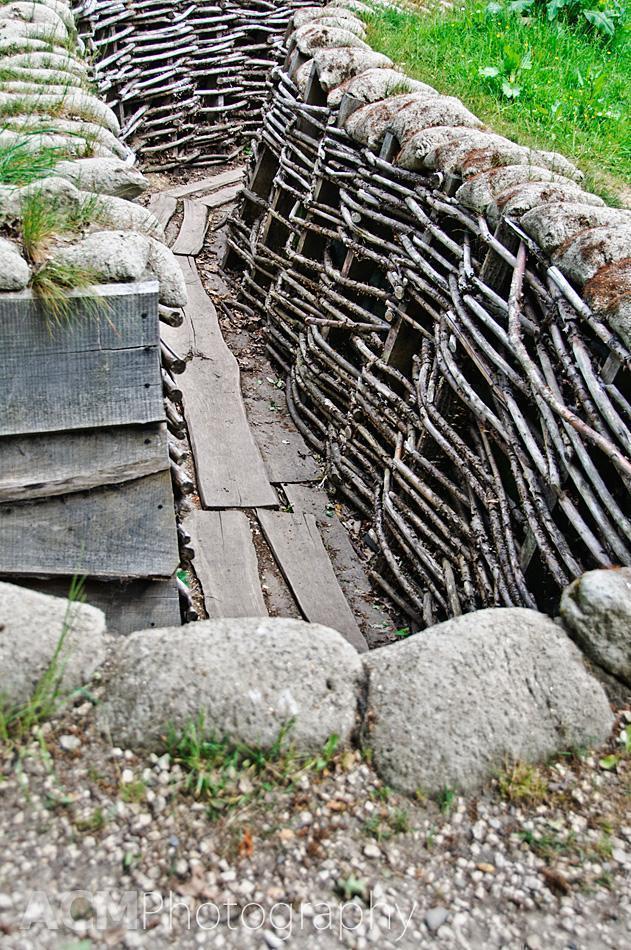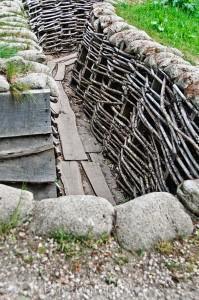
German Trenches at Bayernwald
I’ve been interested in the history of war for 20 years. Although my initial interest was the Second World War, you cannot escape the impact the First World War had on Europe, world politics, and the start of the Second World War. I’ve read many books and watched a lot of films about both wars, but nothing compares to visiting the ‘front’. Alison knows I have more than a passing interest in the wars of the 20th century, so she booked us a trip to visit the battlefields around Ypres for my birthday. This may sound like an odd way to celebrate a birthday, but it was something I really wanted to experience.
Ypres, or Ieper in Flemish, is a place of pilgrimage for people, from all over the world, visiting the graves of family members and paying their respects to the fallen soldiers of World War I. Places like Passchendaele, Vimy, Ypres, and the Somme are deeply ingrained in the consciousness of many nations, especially those in the British Commonwealth who came of age during World War I. Respect earned on the battlefields resulted in increased national identity of countries such as Canada, New Zealand, and Australia. If you are interested in the history of World War I, then a trip to Ypres is a very rich experience.
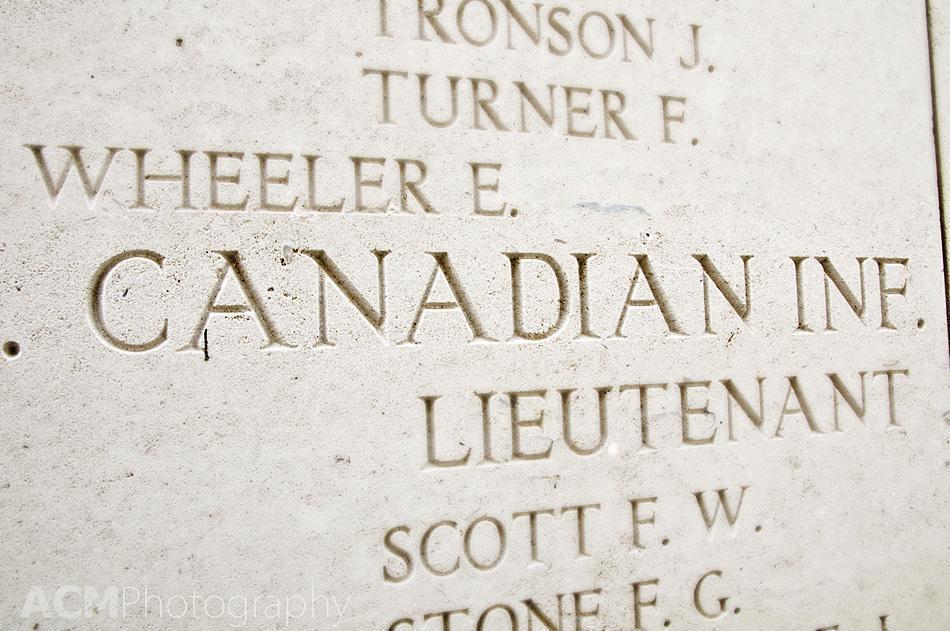
Soldiers names on the Menen Gate in Ypres
The fields around Ypres were the setting for some of the largest and most tragic battles, during the First World War. There was no strategic benefit to the city itself, except to defend the route to the coastal ports of Calais and Dunkirk.
After the fall of Antwerp and the defeat of the Germans in the Battle of the Marne, in September of 1914, the Allies fell back to Ypres and the Germans pressed towards the coast. This led to the first battle of Ypres and, when the Germans failed to break through, both sides digging in for the winter. For the next four years, the two sides would fight from trenches that extended from the North Sea all the way to Switzerland.
Since the war, the fields have returned to farmland and forest, and, adhering to Belgian law, the buildings have been restored exactly where they were before the war. To really understand each site on the battlefield, I strongly recommend you take a guided battlefield tour. You need someone who can show you where the lines were, explain the tactical situation, and describe the state of the soldiers.
Our guide took us to various locations around Ypres, including: Bayernwald, a site containing preserved German trenches; Spanbroekmolen, the site of a mine explosion that is now a pond, called the ‘Pool of Peace’; New Zealand Memorial Park, a set of German bunkers overlooking the slope up which the New Zealanders attacked; and Passchaendaele Memorial Museum.
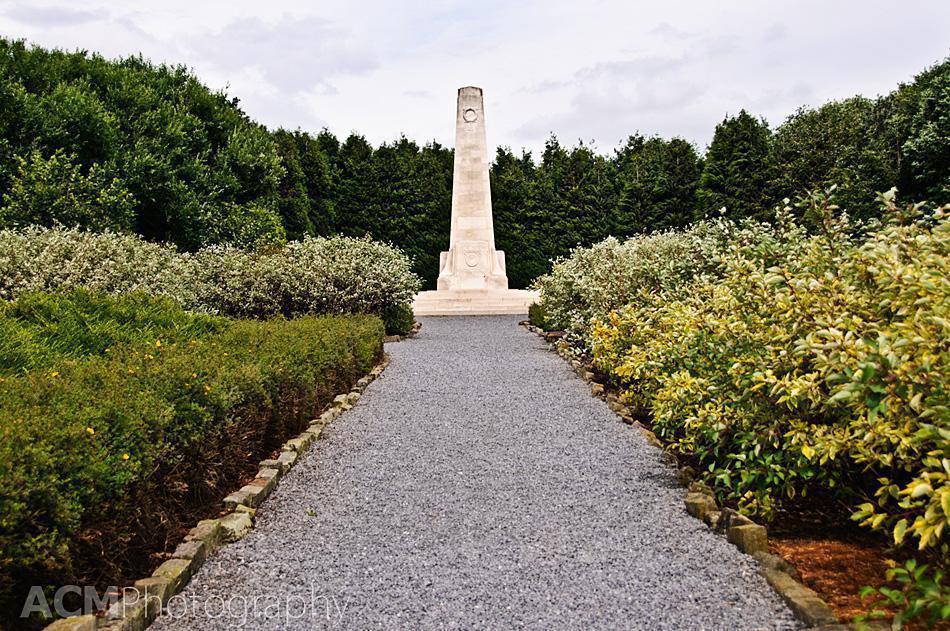
New Zealand Memorial Park
Upon visiting a site like Bayernwald, you realize just how close the lines were. In places, the soldiers were almost within spitting distance of each other! There are lots of stories about soldiers from both sides calling temporary truces at Christmas, for example, and coming together in No-Man’s Land to sing, exchange gifts, and share what little food they had. It’s hard to imagine this happening today.
What really struck me was how, out of such devastation and horror, beauty can emerge. For instance, the Spanbroekmolen site was a place of tremendous violence, with 91000 pounds of explosive tearing a hole in the German lines. Yet today it is a peaceful park with a pond full of lilies, ducks swimming, and the occasional tourist. The contrast is incredible.

Spanbroekmolen, The Pool of Peace
Visiting the cemeteries is also an emotional part of the experience. With the 6th highest death count in history, the First World War cemeteries seem to be everywhere. The area around Ypres contains the majority of the 613 British Commonwealth cemeteries in Belgium, each one beautifully maintained by the Commonwealth War Graves Commission (CWGC). A few are massive, like Tyne Cot or Lijssenthoek, while others are found in the middle of a field, like Croonaert Chapel Cemetery.
Seeing the number of cemeteries, the countless tombstones, and the ages of the soldiers who died, you get a sense of why they call these men the ‘lost generation.’ It’s hard to describe, but standing in one of these cemeteries tears at my heart. My great-grandmother’s brother is buried in Wancourt, France, outside Vimy, so it’s a bit personal, but I don’t think that matters.
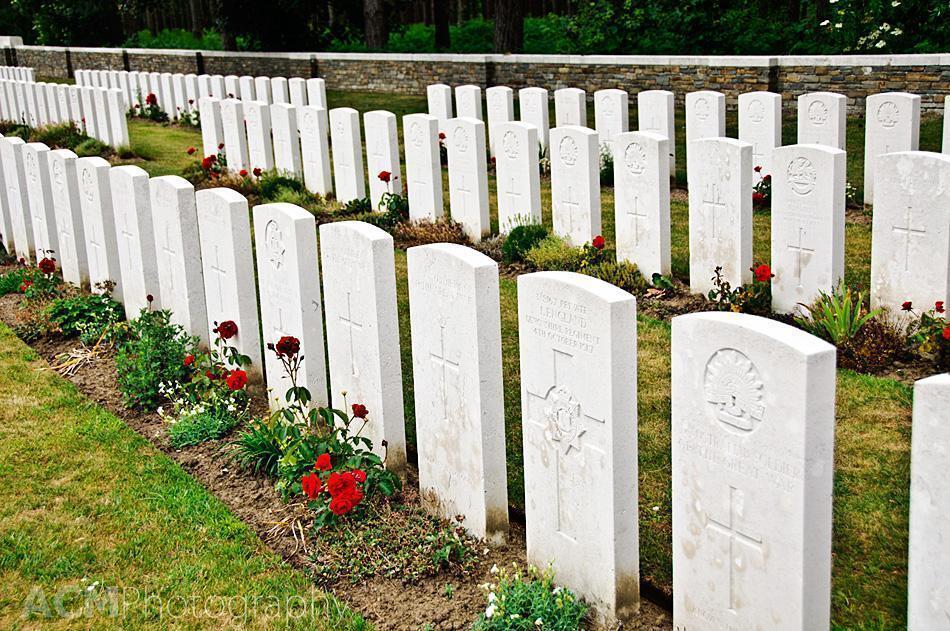
Commonwealth War Graves
If you don’t have time to do a tour of the battlefields, or you just want an overview, then make your way to the museums in the area. There are quite a few to choose from, but the two that give the best overview are the In Flanders’ Fields Museum and the Passchendaele Memorial Museum. They complement each other very well and take about 2-3 hours each. I will write more about these in a follow-up post.

The In Flanders Fields Museum in found in the Cloth Hall in Ypres
Finally, I find the Menin Gate to be a very powerful memorial. One of the entrances to the city of Ypres, it contains the names of 54,896 Commonwealth soldiers who have no known grave. One of the most emotional ceremonies is the bugler that sounds the Last Post, every evening, at 20h00. I challenge anyone to attend a Last Post ceremony and not be moved. We had the privilege to be present during the Remembrance Day (November 11th) ceremony a few years ago and I was moved to tears.
The battlefields of the First World War are places of extremes: tragedy and heroism, beauty and horror, creativity and senselessness, fear and joy. Although I am more interested in the history of the war than most people, you don’t need to be a history buff to visit Ypres. But by taking a battlefield tour, visiting the cemeteries, or checking out the museums, you can get a sense of the extremes and maybe appreciate the freedoms in your life just a little bit more. Remember, although the First World War was supposed to be the war to end all wars, soldiers die or are injured every day defending our way of life.
NOTE: If you are from one of the British Commonwealth nations and you’re searching for a family member’s grave, you can check the CWGC’s website to find the location. The CWGC website also has links to the equivalent sites for the French, Dutch, Americans, and Germans.
For a full listing of our articles like this one, visit our Memorial Tourism in Belgium page.
- Wise Review: How to Save Money on International Currency Transfers - January 20, 2017
- Our 50+ Best Belgium Gifts Online - November 29, 2016
- Review: Crowne Plaza – Le Palace Hotel and Restaurant, Brussels, Belgium - September 30, 2016
- Visiting The Battlefields of Verdun, France
- Exploring the Battlefields of Ypres, Belgium
- Ypres World War One Museums
- Visiting the Fort de Loncin WWI Memorial Site, in Liege, Belgium
- Visiting the Atlantic Wall Museum, Oostende, Belgium
- Bastogne WW2 War Museum, Belgium
- Visiting the Bastogne Barracks and the Vehicle Restoration Centre, Wallonia, Belgium
- Visiting the Fort de Barchon in Liège, Belgium
- Visiting Fort Eben-Emael in Liège, Belgium
- Top 10 War Memorials for Canadians in Europe

